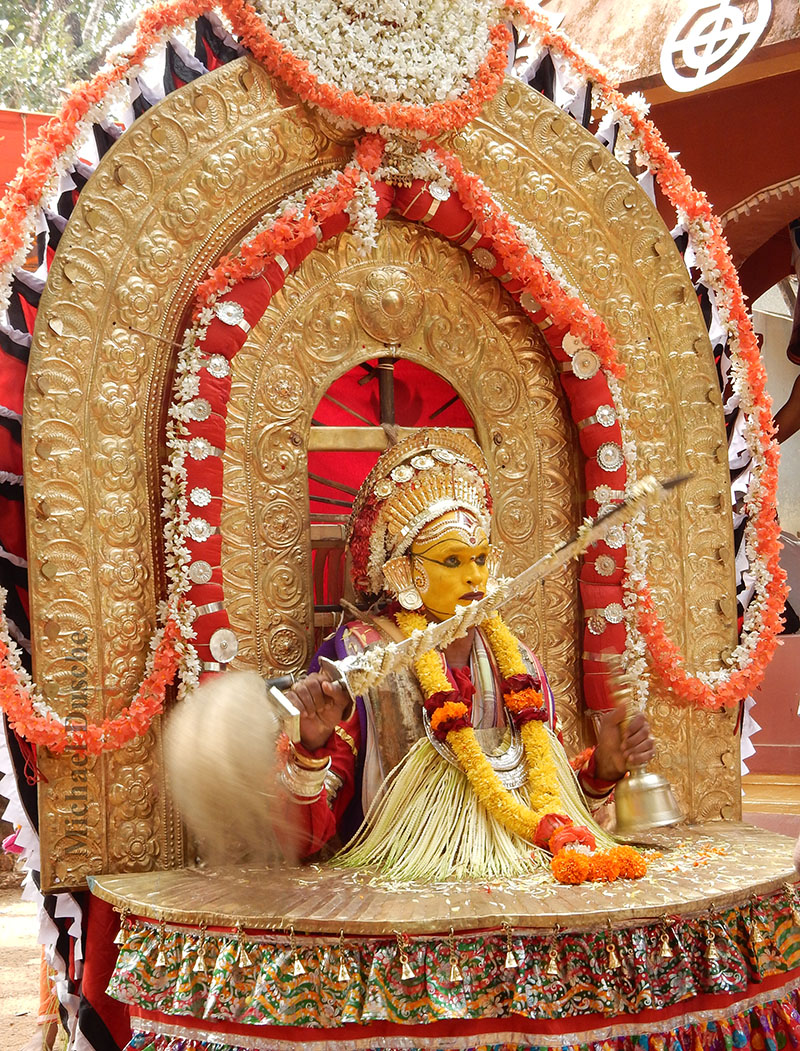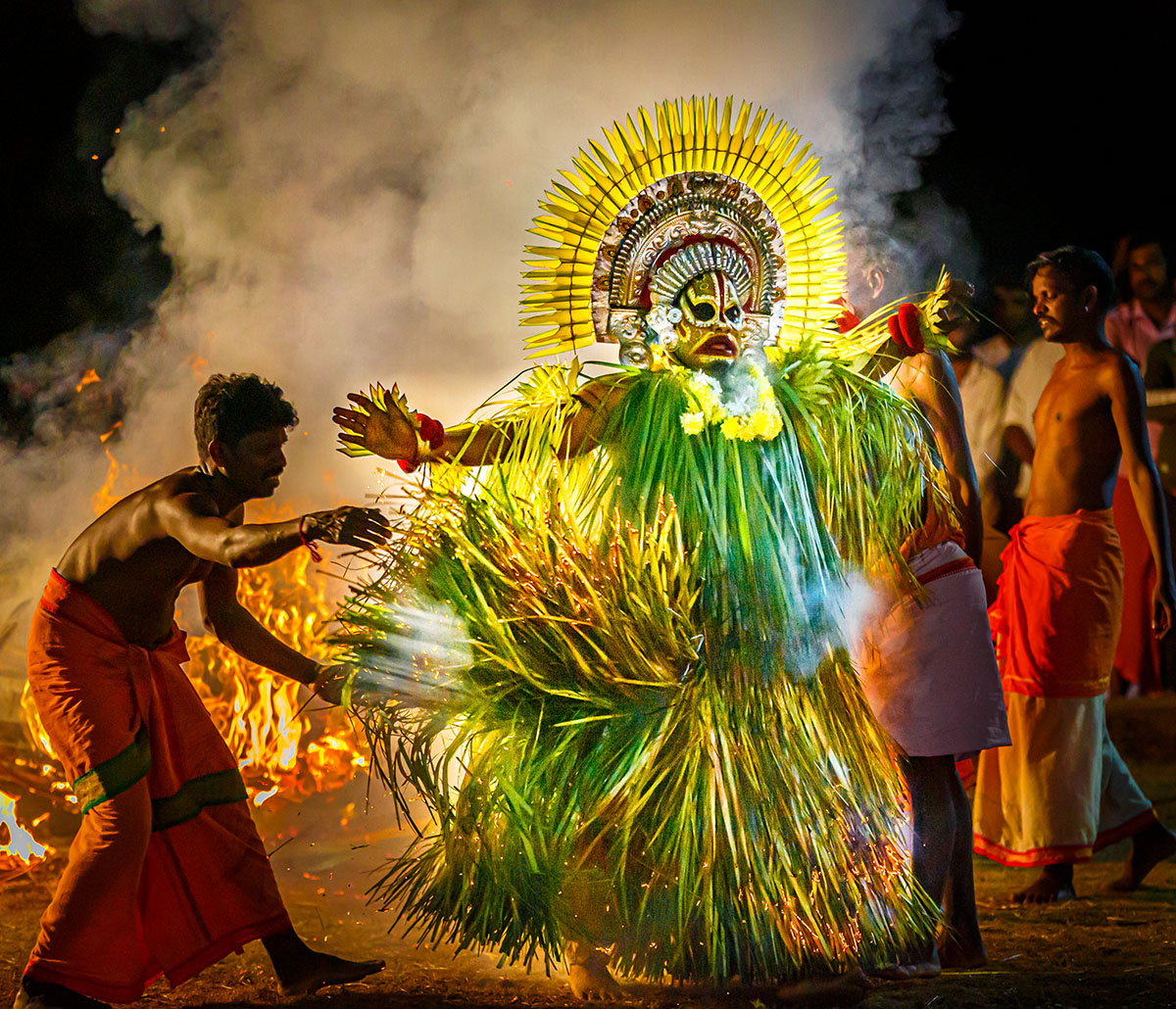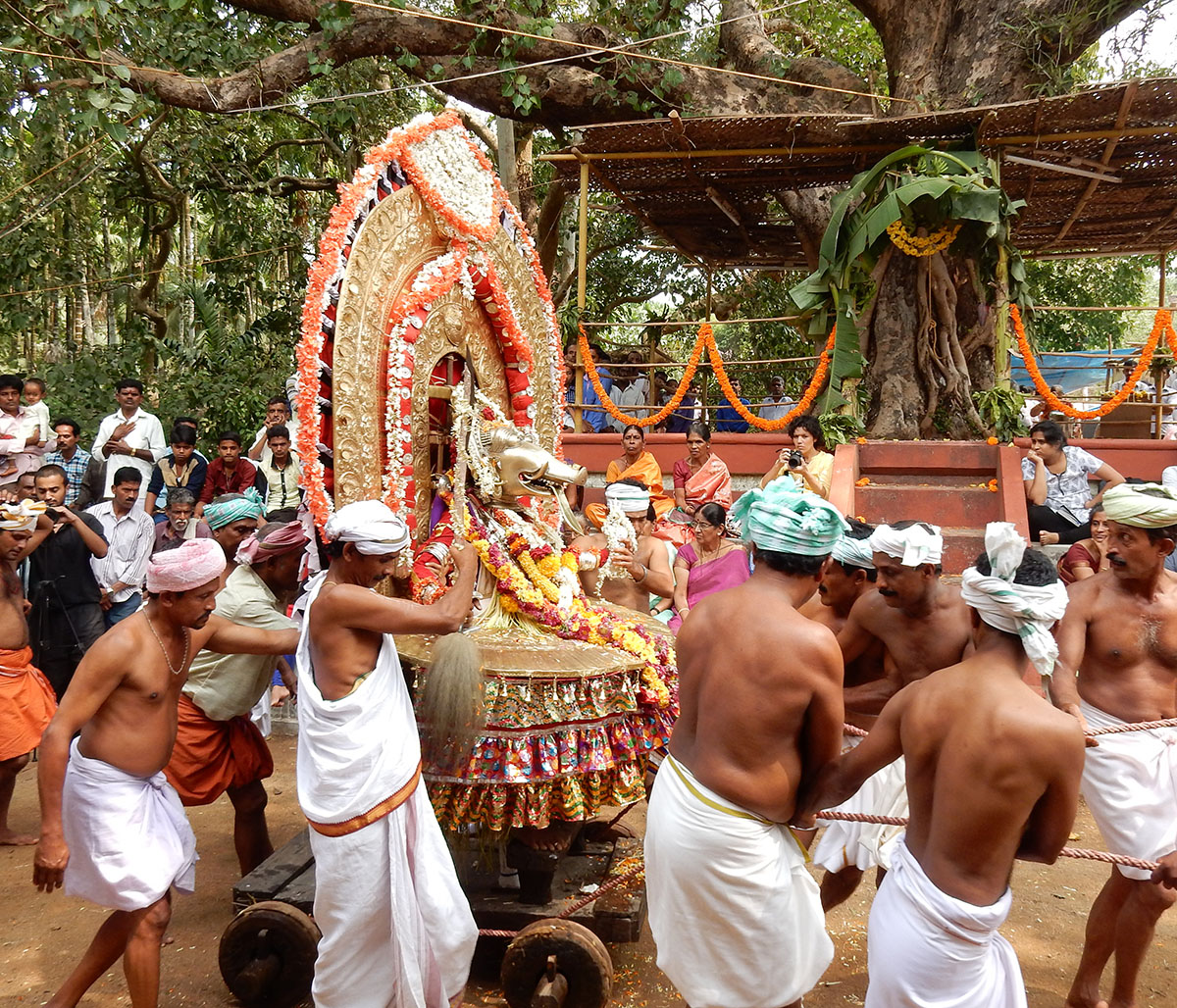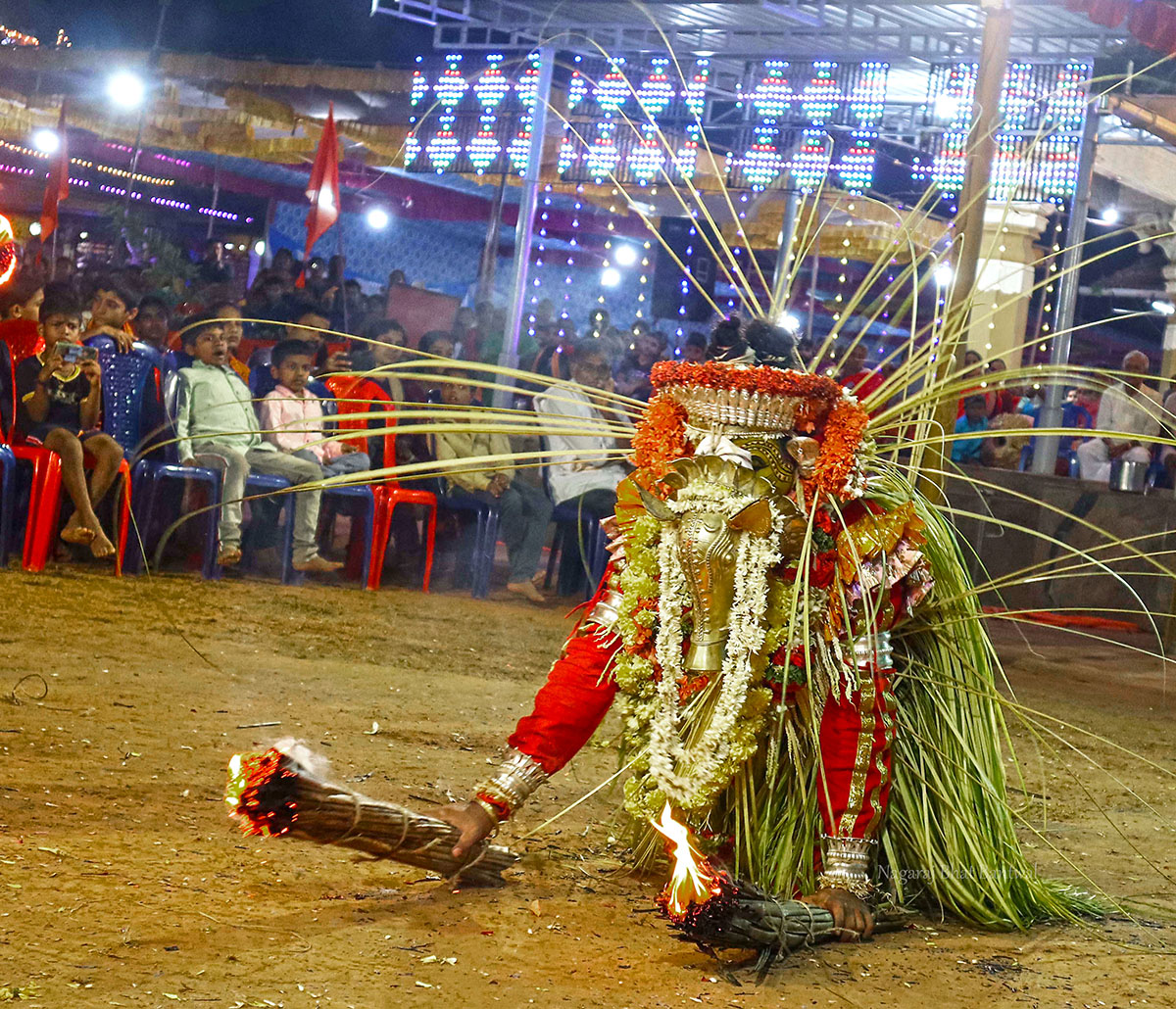ARTICLE
Bhuta Kola
Just before the performance, the patri (medium) dons the costume and makeup of the bhuta, while reciting paddanna (oral epic) verses. These may recount the social issues of the community, since the performer is always of a Scheduled Caste background. The ritual of possession, known as bhuta nema or kola kattuni in Tulu, then commences. The tembere (a percussion instrument) and pipes are played. A priest and the patri worship the bhuta and hand over paraphernalia such as a sword, trident, ani (waist ornament) and the mask to the dancer. The life of the bhuta is recounted through padanna verses, and gradually the patri is possessed. He dances for hours, and may move in and out of the performance space to interact with the audience. Villagers may recount their troubles or ask for help from the bhuta, after which the bhuta reenters the dancer’s body and receives food offerings. It then offers blessings to the village elders or the patron’s family. The ceremony ends with percussion and wind instruments played at high volume, requesting the bhuta to depart.
Traditionally, Bhuta Kolas are organised by local landowning elites, especially of the Bunt caste, who offer agricultural produce to the bhuta. Other villagers and devotees offer their services during the festival and, in return, expect the bhuta to settle their disputes, dispense justice, and bless their farms to future prosperity. Some scholars have described Bhuta Kola performances as creating a “spiritual court” for devotees, as locals recount their grievances to the bhuta, who must then be appeased in order to maintain cosmic balance and prevent misfortune. Bhuta Kola may thus be interpreted as both a religious practice and a means to ensure social justice as it emphasises a network of transactional relationships within the village; however, it simultaneously maintains caste hierarchies within the community, as the status afforded to the Scheduled Caste performers during the ritual is revoked once it is complete.
Some scholars have suggested that the bhuta cult predates the early historic period. However, the evidence available suggests that it gained prominence in the region in the medieval period as a form encompassing aspects of ritual performance, folk judiciary, and entertainment. The form is also said to have influenced the theatrical performance genre of yakshagana.
Bhuta kola continues to be widely practiced in Tulu Nadu today.
Bibliography
Our website is currently undergoing maintenance and re-design, due to which we have had to take down some of our bibliographies. While these will be re-published shortly, you can request references for specific articles by writing to hellomapacademy@map-india.org.










